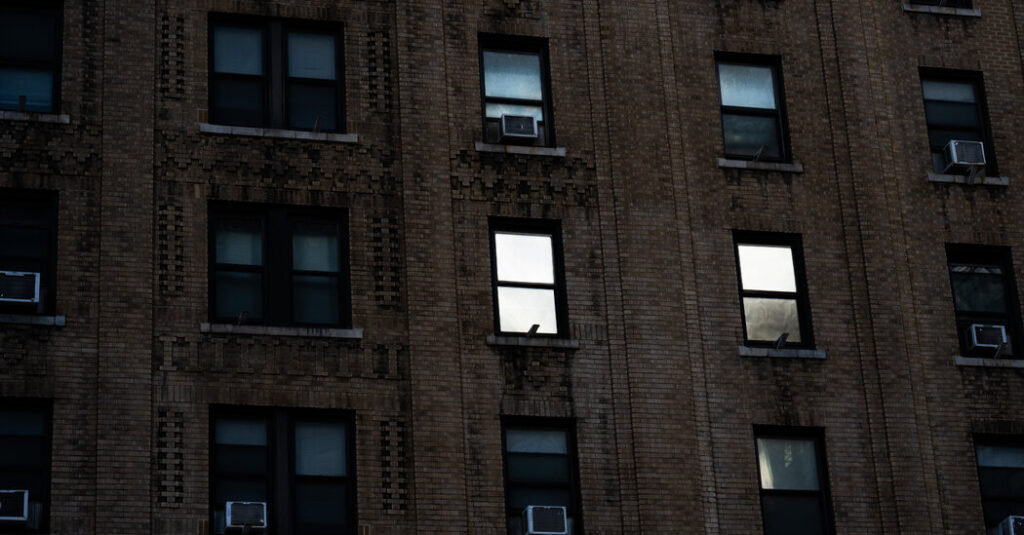For the past two decades, Lena Carter has lived in a one-room apartment in a converted hotel near Times Square. It is where she found stability after being homeless, where she worked on her sobriety, where she wrote in her journals. Most of her $1,216 monthly rent is covered by a federal program called Continuum of Care.
In less than two months, that program could be upended by a new set of rules that redefine which types of housing and programs are eligible for its $3.9 billion pot of funding, a change that many people who work with the homeless fear could leave thousands of New Yorkers like Ms. Carter with nowhere to live.
The new rules reflect the Trump administration’s approach to the homelessness crisis: favoring shelters and rehabilitation centers over long-term housing for people who use drugs and alcohol, requiring people to get treatment for drug and alcohol abuse and threatening not to fund programs that focus on diversity or transgender clients.
On Tuesday, Attorney General Letitia James of New York joined 18 Democratic attorneys general and two governors in a lawsuit against the U.S. Department of Housing and Urban Development in an attempt to stop the new rules. The suit, filed in U.S. District Court in Rhode Island, argues that HUD unconstitutionally changed spending already authorized by Congress, among other points.
HUD did not respond to multiple requests for comment.
The changes could jeopardize housing for 170,000 people across the United States, advocates for the existing system say. In New York, that could include nearly 14,000 households statewide. Reduced funding for long-term housing would be a sharp departure from the approach New York pioneered: Get people off the streets first, then try to help them heal.
“If you cancel out all of these places like this that some people are humbly grateful to have, where are you going to put them?” Ms. Carter said. “What are they going to do?”
Ms. Carter, 65, lives at the Geffner House on West 42nd Street in Manhattan, along with other formerly homeless residents who receive therapy and other services in what is known as supportive housing. The new rules could affect about 115 tenants, many of whom are disabled or have substance abuse or mental health issues, according to Project Renewal, the nonprofit that operates the housing.
“That will lead them back to the crazy stuff that they were doing,” Ms. Carter said. “And that’s what you’re trying to avoid.”
The New Strategy
Those who work with the homeless in New York knew that the landscape was changing under President Trump.
Executive orders or efforts from HUD in recent months had focused on adding work requirements to receive services and cutting funding for programs that focused on diversity, equity and inclusion. But these efforts were blocked temporarily by lawsuits.
But the new rules, delivered on Nov. 13, outlined changes that are to take effect faster and go deeper than anticipated. Perhaps most significant is the drop in federal funding for long-term housing.
The Trump administration has said that the new guidelines, focusing on short-term assistance rather than long-term housing, will encourage independence. “HUD will continue to serve the American people through means-tested measures to encourage self-sufficiency,” a spokesman for the department said after the new rules were made public.
But Cal Hedigan, the chief executive of Community Access, which oversees 54 units in a Brooklyn supportive housing building that could lose funding, called the change “catastrophic.”
“It is even hard to get my mind around the impact and how we can turn our backs on this proven solution to ending homelessness,” he said.
The new directive seeks to correct what the Trump administration sees as an overreliance on subsidized permanent housing and an underfunding of programs that offer temporary shelter, and substance abuse or mental health treatment first, said Stephen Eide, the author of “Homelessness in America: The History and Tragedy of an Intractable Social Problem.”
This treatment-first strategy would take New York away from what is called the housing-first model, which originated in the city in the 1990s. Supportive housing typically does not require people to get treatment or work to qualify. Critics of these programs, which can be very expensive, say they enable the problems that cause homelessness to persist, at taxpayers’ expense.
“Everyone agrees housing first has been very influential, and everyone agrees homelessness rose to historically high levels, therefore they feel justified in taking things in a different direction,” Mr. Eide said, referring to the Trump administration.
He added that the current spike in homelessness had many causes, including high rates of addiction, the skyrocketing cost of living and the migrant crisis. New York City set a two-decade high this year with more than 4,500 people estimated to be living on the streets, in the subway or in other public places.
Officials at many programs are worried about losing funding, said Kristin Miller, the executive director of Homeless Services United, a coalition of more than 50 nonprofit agencies that serve the city’s homeless. “Do I try and find alternative funding, or does it mean that I close the program and people have to be affected?” Ms. Miller said, describing her members’ thinking. “It is just this total crapshoot that’s going on right now.”
There is no mention in the new rules about how to find new housing for the people served by the programs that are losing funding, many of them disabled and over 50 years old.
In New York City, where about 7,300 households may be affected, the vacancy rate of affordable apartments is less than 2 percent. There simply are not places for people to go, said Pascale Leone, the executive director of the Supportive Housing Network, which represents nonprofits that operate or develop supportive housing.
“What we are working to figure out is how do you cobble together resources to mitigate the harm,” Ms. Leone said. “But harm will absolutely come.”
‘A Different Interpretation’
Diversity efforts were expressly included under the Biden administration’s rules for obtaining Continuum funding. But under the new rules, applicants can be rejected for actions like taking measures to diversify the staff or serve clients who are transgender, advocates say.
The Trump administration has framed many diversity efforts as “discrimination.” HUD has broad authority to determine which programs are in compliance, leaving housing providers uncertain of what is to come.
“From our perspective, we are placing people into an apartment where their gender identity makes absolutely no difference,” said Charles King, the chief executive of Housing Works, which provides housing for people living with H.I.V. and AIDS, including some trans clients. “We would argue that we do not run aground.”
Still, he added, the more than $6 million it receives from Continuum funds could be in jeopardy: “But I think if HUD decided it wanted to inspect Housing Works programs, it would come up with a different interpretation.”
Several groups that provide some housing for transgender people declined to discuss the potential effect of the new rules out of concern that they would call attention to those programs and risk losing funding.
At the Y.W.C.A. of NorthEastern NY, which provides permanent housing for survivors of domestic violence and others at Rosa’s House in Schenectady County, language about fighting racism and empowering women is part of the organization’s 130-year-old charter. Staff members fear such language might disqualify them from federal funding, and cost them the 25 apartments at Rosa’s House that are supported by Continuum funds, said Tamara Flanders, the group’s housing director. It has no plans to change its mission statement.
“We can’t whitewash anything — not that we would,” Ms. Flanders said. “We stand behind our mission of empowering women and eliminating racism and providing services to all in need.
“We will not waver from that, but we have to find ways forward.”
Sarah Maslin Nir is a Times reporter covering anything and everything New York … and sometimes beyond.
The post New York Leads Effort to Stop Plan That Could Cut Housing for 170,000 appeared first on New York Times.




